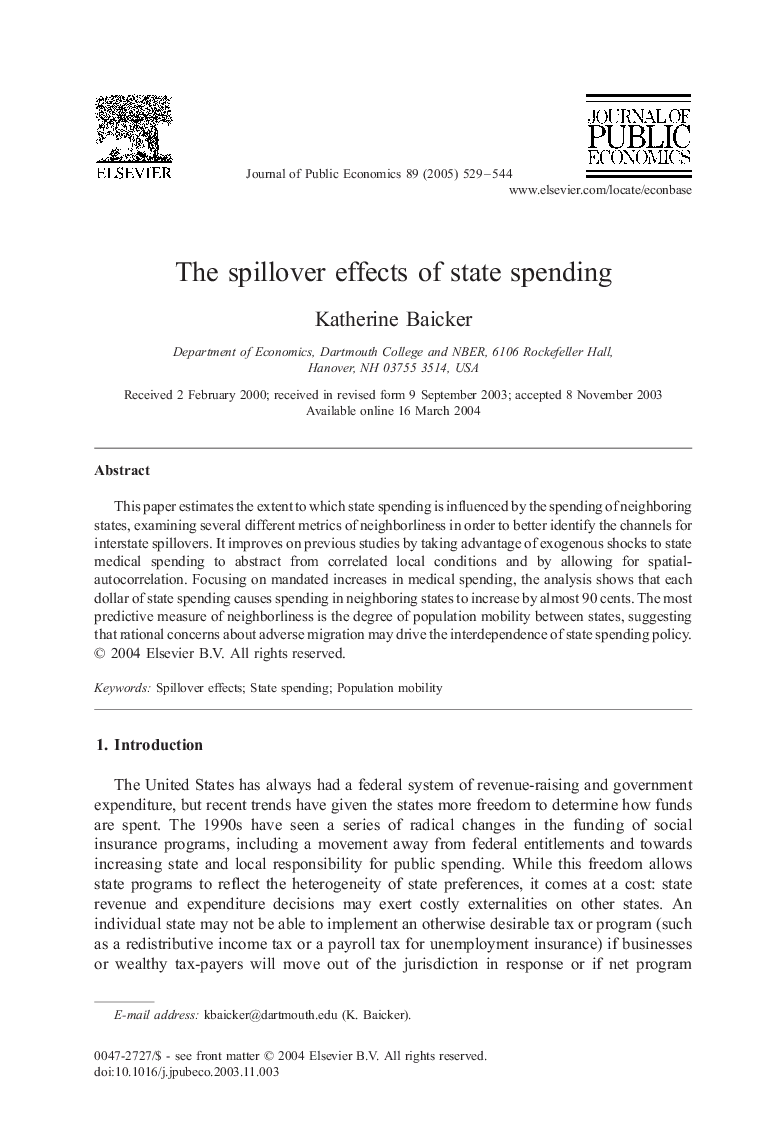| Article ID | Journal | Published Year | Pages | File Type |
|---|---|---|---|---|
| 9726887 | Journal of Public Economics | 2005 | 16 Pages |
Abstract
This paper estimates the extent to which state spending is influenced by the spending of neighboring states, examining several different metrics of neighborliness in order to better identify the channels for interstate spillovers. It improves on previous studies by taking advantage of exogenous shocks to state medical spending to abstract from correlated local conditions and by allowing for spatial-autocorrelation. Focusing on mandated increases in medical spending, the analysis shows that each dollar of state spending causes spending in neighboring states to increase by almost 90 cents. The most predictive measure of neighborliness is the degree of population mobility between states, suggesting that rational concerns about adverse migration may drive the interdependence of state spending policy.
Keywords
Related Topics
Social Sciences and Humanities
Economics, Econometrics and Finance
Economics and Econometrics
Authors
Katherine Baicker,
